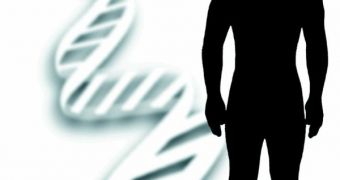In a world of intense migration and immigration, who can tell where his/her roots are? In fact, countries like US, Canada and Australia are mainly made of more or less recent immigrants. This is more than a question of identity. Various human populations display different genetic predispositions to diseases. Our physic says some about our family tree, but that information does not go to lower branches.
No problem. A team made of computer scientists, mathematicians and biologists has developed a computer algorithm that can detect in minutes an individual's genetic ancestry based on a small sample of DNA and without any previous knowledge of their background.
The article, published in the journal PLoS Genetics, shows that, unlike softwares requiring previous knowledge of an individual's ancestry and background, the new algorithm focuses on DNA markers called single nucleotide polymorphisms (SNPs), representing changes of just one base nucleotide in the DNA molecule. And the DNA sample can be achieved just as a simple cheek swab. The software employs genetic data coming from previous researches, including the new HapMap database, which maps variations in the human genome.
"Now that we have found that the program works well, we hope to implement it on a much larger scale, using hundreds of thousands of SNPs and thousands of individuals. The program will be a valuable tool for understanding our genetic ancestry and targeting drugs and other medical treatments because it might be possible that these can affect people of different ancestry in very different ways," said senior author Petros Drineas, assistant professor of computer science at Rensselaer Polytechnic Institute.
Even if 99% of the DNA is the same amongst all humans, that 1% makes the difference in how we cope with diseases, viruses, medications, and toxins. "If researchers can uncover the minute genetic details that set each of us apart, biomedical research and treatments can be better customized for each individual," said Drineas.
Of course, the software has many scientific applications too. Historians and anthropologists could find it significantly easier to show the origin of various populations. The software was 99% accurate in trials and correctly tracked down the ancestry of hundreds of people, including individuals coming from genetically close populations (like Chinese and Japanese) or complex genetic mixtures, like Puerto Ricans, whose ancestries comprise Native Americans, Europeans and Africans.
"When we compared our findings to the existing datasets, only one individual was incorrectly identified and his background was almost equally close between Chinese and Japanese," said Drineas.

 14 DAY TRIAL //
14 DAY TRIAL //